Distribution of CL according to Types and Countries
Our census of Cutis Laxa patients allows today to establish
its breakdown by known types and also by countries
You can find here the table updated on 2024, February 12th
Our census of Cutis Laxa patients allows today to establish
its breakdown by known types and also by countries
You can find here the table updated on 2024, February 12th
Carried out between January and April 2023, together with EMMA Society, this international survey evaluates the prevalence (number of cases among a defined population), impacts, behaviours and needs of different skins and skin disorders depending on geographical areas, countries or complexion.
It included 50,552 participants (adults ≥16 yo) in 20 countries (China, USA, Brazil, India, Australia, France, Italy, Canada, Denmark, Germany, Israel, Kenya, Mexico, Poland, Portugal, Senegal, South Africa, South Korea, Spain and United Arab Emirates) distributed across the 5 continents.
It is therefore the biggest private database in dermo-cosmetics.
Take a look at all the results on this page : https://www.changer-de-regard.com/#all
Marie-Claude Boiteux took part in writing a new scientific publication : « Testimonies, feelings, complaints and emotional experiences of patients suffering from dermatosis on social medias : French Infodemiologic* Study of patients’ uncensored words ».
Steming from a work led by Pierre Fabre Dermo-Cosmetic & Personal Care together with the society Kap Code specialised in the analysis of real-life data in health who listened for 3 years to patients’ uncensored words as publicly expressed on social media.
The internet offers a forum to those for whom the skin disorder bridles their social relationships. Through social media, they share their real-life experience and reveal what they do not say – because they do not dare to or because of lack of time – in medical consultations: Self-image, physical and psychological impacts, therapeutic roving, etc.
Collected, analysed and related verbatims, this work shows the emergency and need to « change our gaze on visible disorders of the skin”. https://www.changer-de-regard.com/#ecoute-reseaux
*Infodemiology was defined by Gunther Eysenbach in the early 2000s as information epidemiology.It is an area of science research focused on scanning the internet for user-contributed health-related content, with the ultimate goal of improving public health. It is also defined as the science of mitigating public health problems resulting from an infodemic.
An article has just been published in JEADV :
Patients’ testimonies, feelings, complaints and emotional experiences with dermatoses on open social media:
CONECT Project (Cardio-Ocular NEtwork Connective Tissue)
gathers together several organisations dedicated to connective tissue rare disorders with cardiovascular involvement : Arterial Tortuosity Syndrome, Marfan Syndrome, Ehlers-Danlos Syndrome, Cutis Laxa, Loeys-Dietz Syndrome, etc… Initiated by the American Patient Organisation for Arterial Tortuosity (ATOF-ATS), it aims to build a collaboration to evaluate the common issues in a population with similar patients, to inform on possible treatments that are not widely known, to ensure that patients have a minimum of scientific and clinical knowledge on their disorder to be able to give their informed consent to take part in research programmes and to improve their quality of life. Online webinars have already been set up, for patients as well as health professionnals.
6th Novembre 2023 :
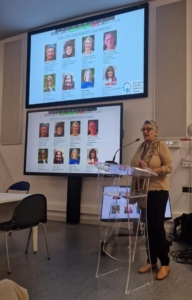
ERN-Skin Annual Board Meeting.
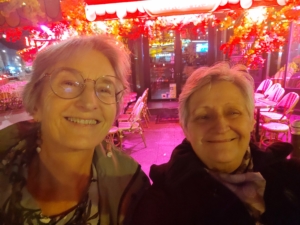
It really was a great pleasure to meet again in person with all members of ERN-Skin.
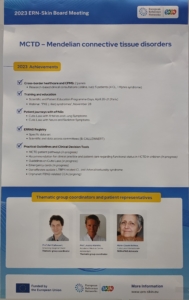
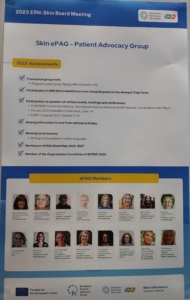
Whether we are Health professionnals, doctors, researchers or patient representatives, a real common will drives us : improving Skin Patients’ quality of life throughout Europe.
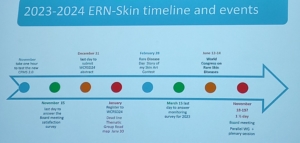
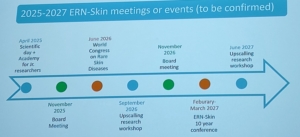
The new roadmap for the coming years (2023-2027) has many signposts along the way, whether for health professionnals or Patients’ representatives
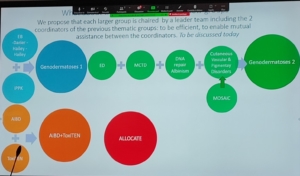
The first results of the Patient Satisfaction Survey are being analysed.
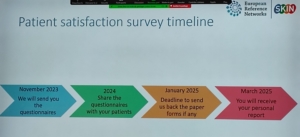
If you are a dermatology patient THIS IS VERY IMPORTANT
You are invited to take the GRIDD Survey now and share it with anyone who can take part!
On June 5, 2023, GlobalSkin, in collaboration with Cardiff University (UK) and University Medical Centre Hamburg-Eppendorf (Germany), launched the Global Research on the Impact of Dermatological Diseases (GRIDD) Study.
Launched with the aim of engaging 10,000 participants, the GRIDD Study takes 10-20 minutes to complete and is accessible in 17 languages.
The data collected will help to validate the need for improved care, better treatment options, and more affordable medicine for dermatology patients globally.
The GRIDD Study is open until September 28, 2023.
The “Patient Journey” seeks to identify the needs that are
specific to individual syndromes. To achieve this, patient
representatives completed a mapping exercise of the needs
of each rare inherited syndrome they represent, across the
different stages of the Patient Journey.
This is the definition of the Patient Journey as mentioned in this article published in 2019.
This is an important work and we established the Cutis Laxa “Patient Journey”.
Cutis Laxa being such a complex disorder, with several subtypes and various associated symptoms, we could not have just one Cutis Laxa “Patient Journey”. We gathered together associated symptoms of the different subtypes and ended with two groups of subtypes.
Here are the results for the two “Patient Journeys” for Cutis Laxa patients:
Adamo et al. describe a cutis laxa syndrome caused by bi-allelic loss of-function variants in EMILIN1 characterized by arterial tortuosity, aneurysm formation, and osteopenia. They provide a model in which EMILIN1 connects elastic fiber network with collagen fibril formation, relevant for both bone and vascular tissue homeostasis.
The European Reference Networks (ERNs) set up by the European Commission allow a collaboration between all health professionals concerned by a specific disorder throughout Europe.
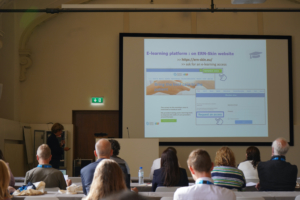
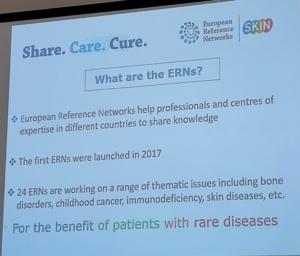
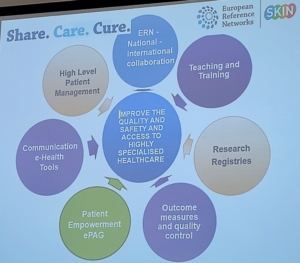
They also allow the discussion of more difficult cases, online, thanks to the Clinical Patient Management System (CPMS) plateform.
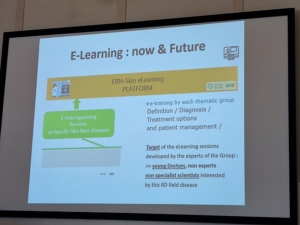
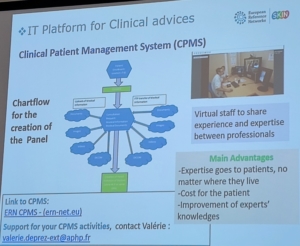
This site uses cookies. By continuing to browse the site, you are agreeing to our use of cookies.
OKLearn moreYou can read about our cookies and privacy settings in detail on our Privacy Policy Page.
Privacy Policy